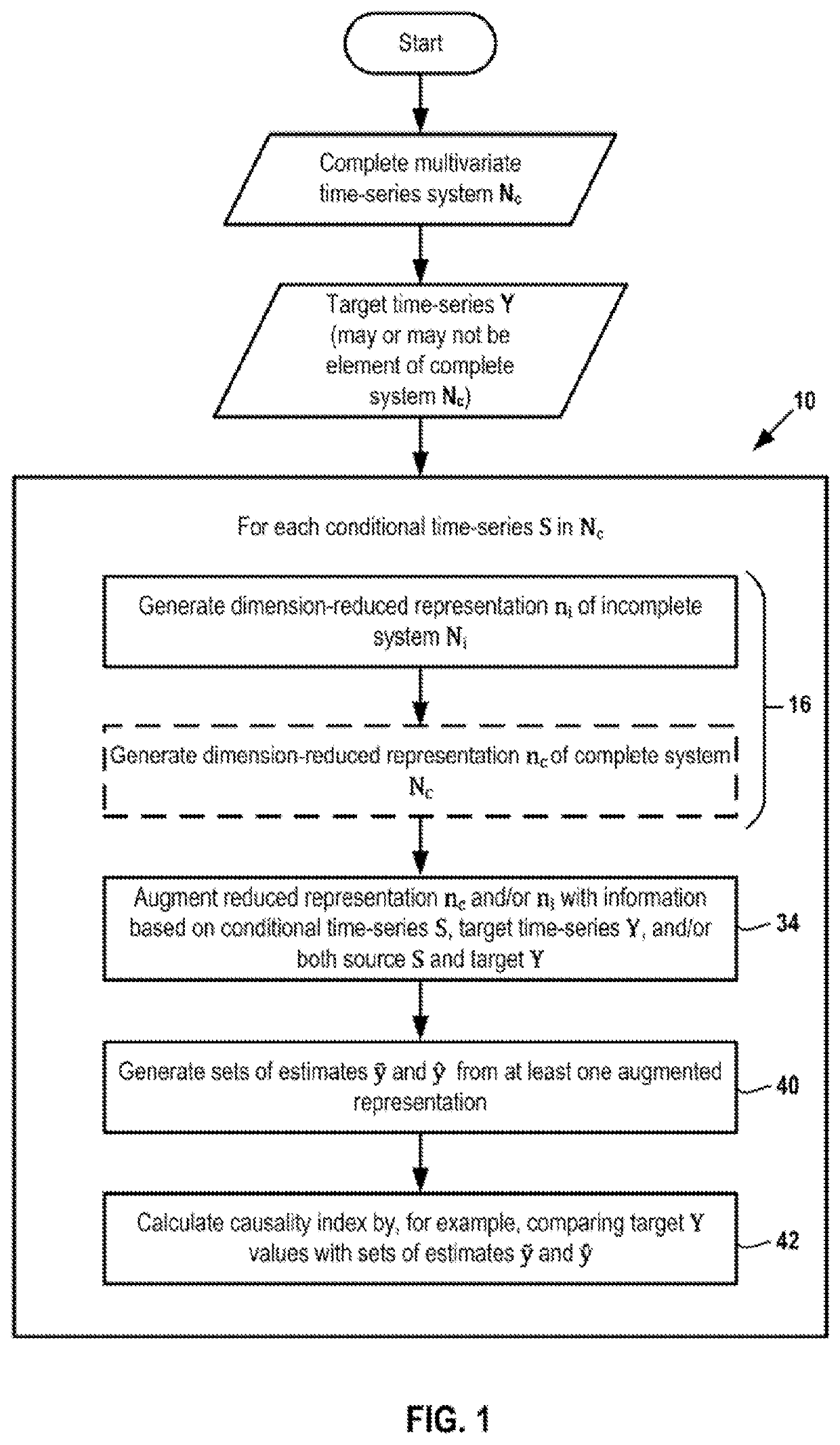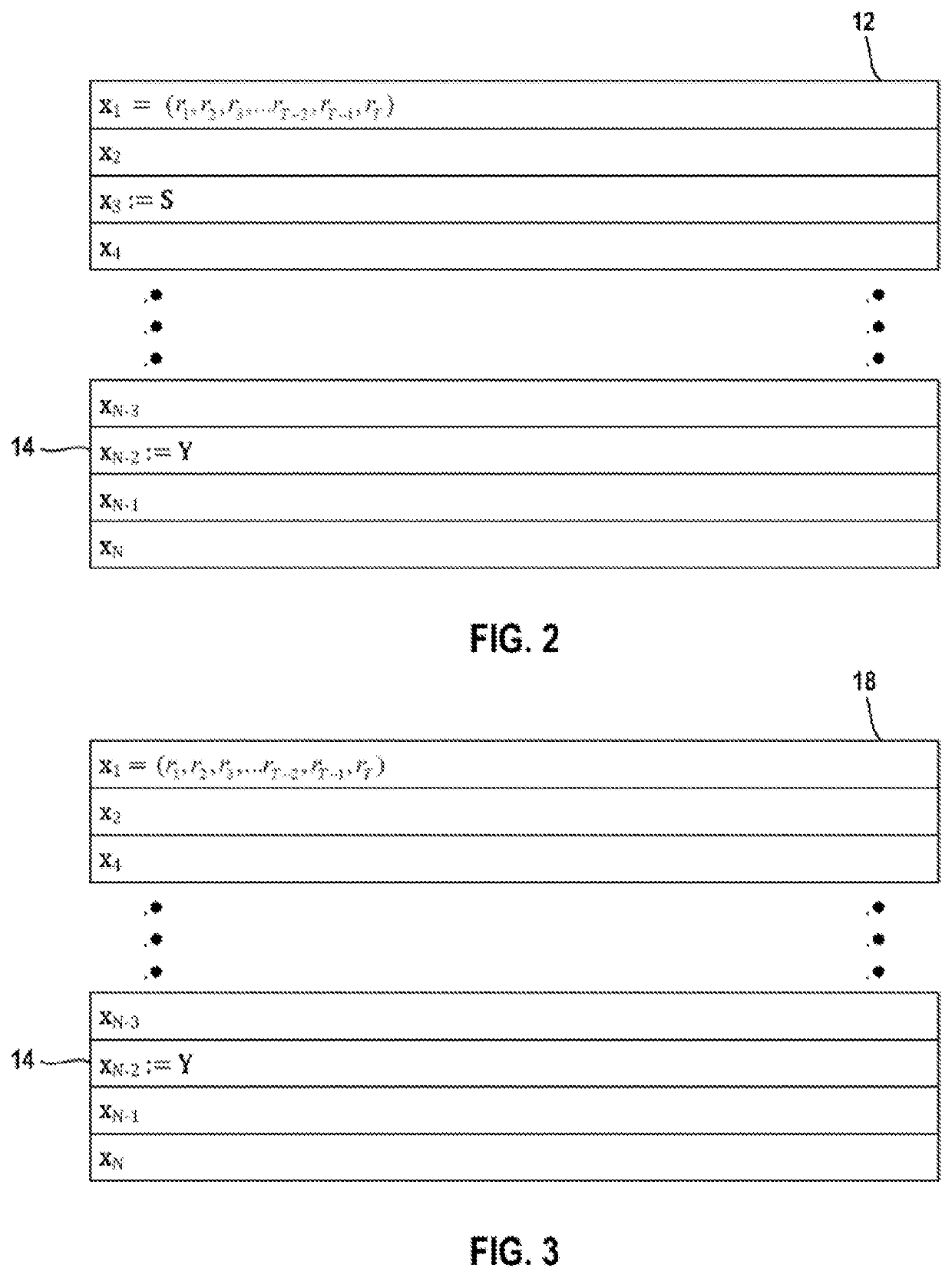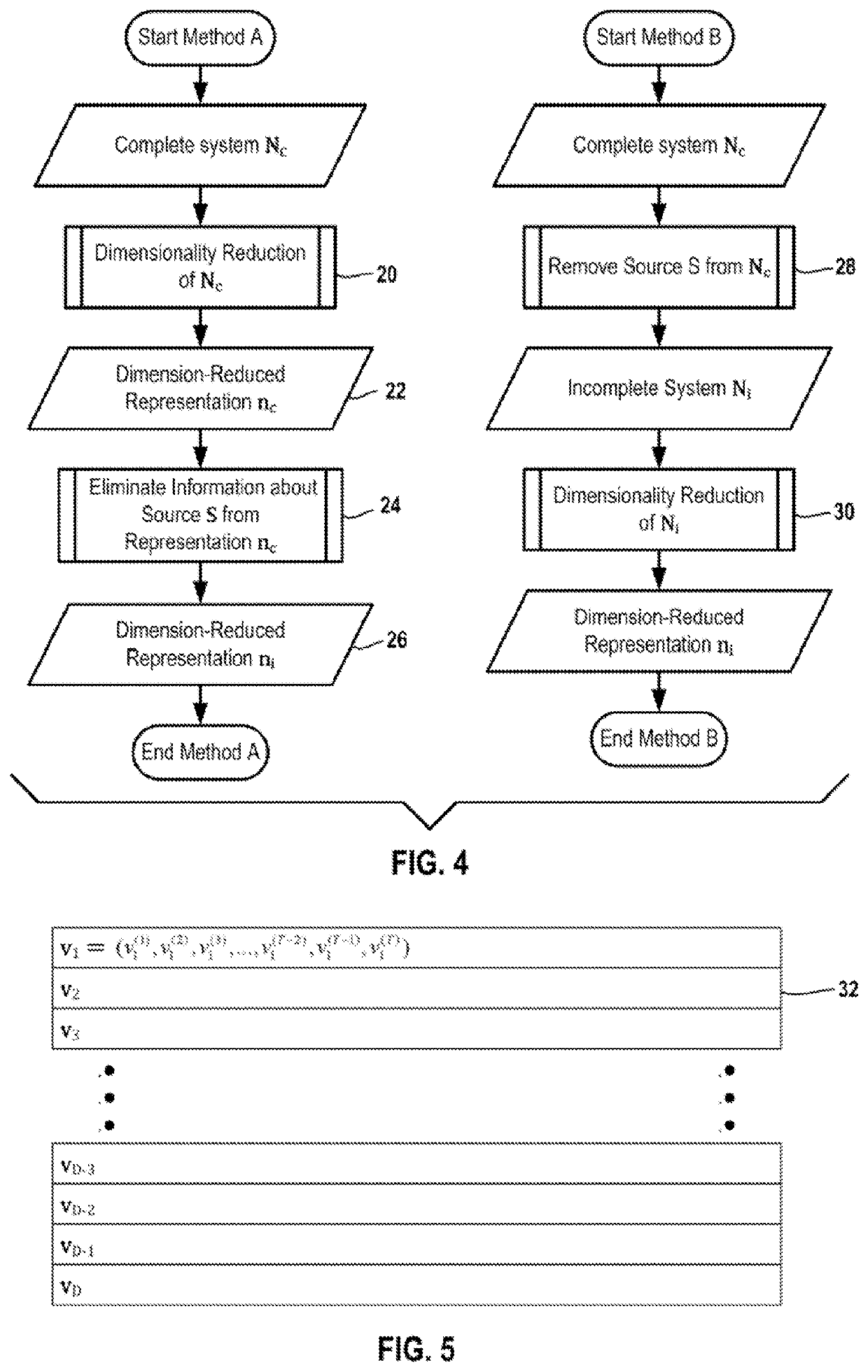Method and Device for Determining a Measure of Causal Influence Between Components of Complex Systems
a causal influence and component technology, applied in the direction of relational databases, instruments, diagnostic recording/measuring, etc., can solve the problems of high-dimensionality data, inability or very difficult parameter optimization of non-linear time series models, and inability to calculate the number of temporal values, etc., to achieve the effect of reducing dimension representation, reducing dimensionality, and increasing size or complexity
- Summary
- Abstract
- Description
- Claims
- Application Information
AI Technical Summary
Benefits of technology
Problems solved by technology
Method used
Image
Examples
Embodiment Construction
[0083]FIG. 1 illustrates the main steps of the lsXGC method 10 as applied to a high-dimension multivariate time-series dataset 12. The dataset defines a complete multivariate time-series system Nc∈N×T having simultaneously measured values. The complete system Nc includes as a subset one or more time-series defining a conditional source time-series or source S. It is desired to evaluate the causal influence of each source S on a dataset 14 defining a target time-series or target Y having values simultaneously measured with those of the complete series Nc. A source S may include more than one row of the N rows of Nc. The target Y may or may not be an element or subset of the complete system Nc.
[0084]FIG. 2 illustrates the dataset 12 defining the complete system Nc that includes N time-series x1, x2, x3, . . . , xN-3, xN-2, xN-1, and xN. Each time-series is a series of T data points indexed or stored in time order. FIG. 2 illustrates the members of the time-series x1=(r1, r2, r3, . . ....
PUM
 Login to View More
Login to View More Abstract
Description
Claims
Application Information
 Login to View More
Login to View More - R&D
- Intellectual Property
- Life Sciences
- Materials
- Tech Scout
- Unparalleled Data Quality
- Higher Quality Content
- 60% Fewer Hallucinations
Browse by: Latest US Patents, China's latest patents, Technical Efficacy Thesaurus, Application Domain, Technology Topic, Popular Technical Reports.
© 2025 PatSnap. All rights reserved.Legal|Privacy policy|Modern Slavery Act Transparency Statement|Sitemap|About US| Contact US: help@patsnap.com



